1917: Behind-The-Scenes Facts About The World War I Movie
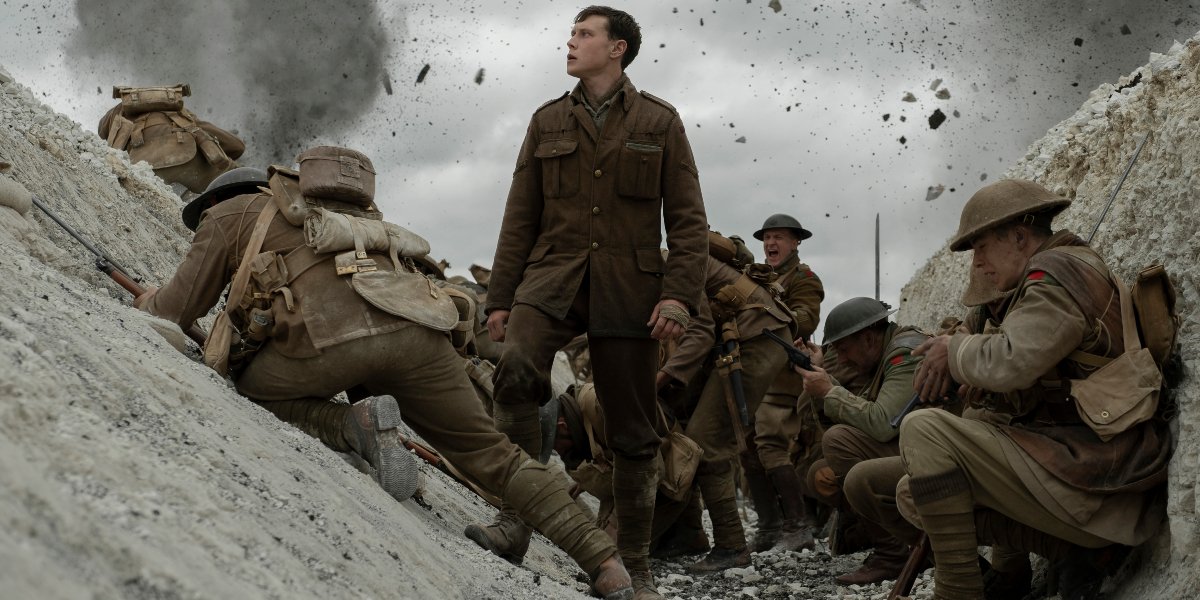
There are war movies and then there is 1917, Sam Mendes' Oscar-winning epic about two young British soldiers sent into No Man's Land to deliver a message that could potentially save thousands of lives, or cost them if they fail. And as intense as a cinematic experience the film ended up being, some of the behind-the-scenes facts about how it all came together are just as, if not more, insane than what we saw in the final cut.
From the decision to present the film as a continuous one-shot that only breaks from the action for a specific reason to the way the production team had to secure a license to possibly exhume bodies while filming to the meaningful story behind the narrative, there's a lot to unpack regarding 1917, so let's not waste any more time and get this thing going.
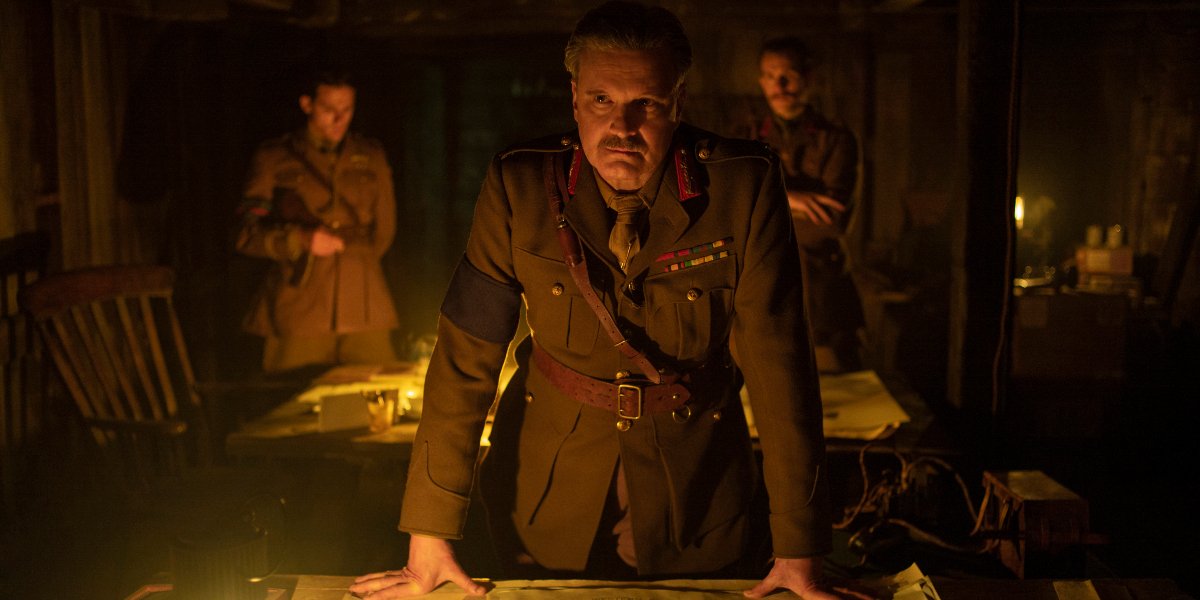
1917 Was Inspired By A Story Sam Mendes' Grandfather Told About The War
Although it wasn't based on a true story, 1917 was very much inspired by a story that director Sam Mendes' grandfather told him about serving in World War I. During a conversation with the Washington Post after taking home a Golden Globe for Best Director earlier in 2020, Mendes explained that when he was younger, his grandfather told him a story about being tasked with delivering a message that took him places that would end up in the movie, stating:
He told one particular story about carrying a message in no man’s land between post to post at dusk, in the mist, and that image of him, that little man alone in that vast emptiness, stuck with me. And when I came to have the courage to sit down and write my own script, that was the story I felt compelled to tell.
One thing Mendes still remembers about his grandfather was the way in which the war changed him, including the need to constantly wash his hands because of his memories of spending those fateful days in muddy trenches on the Western front.
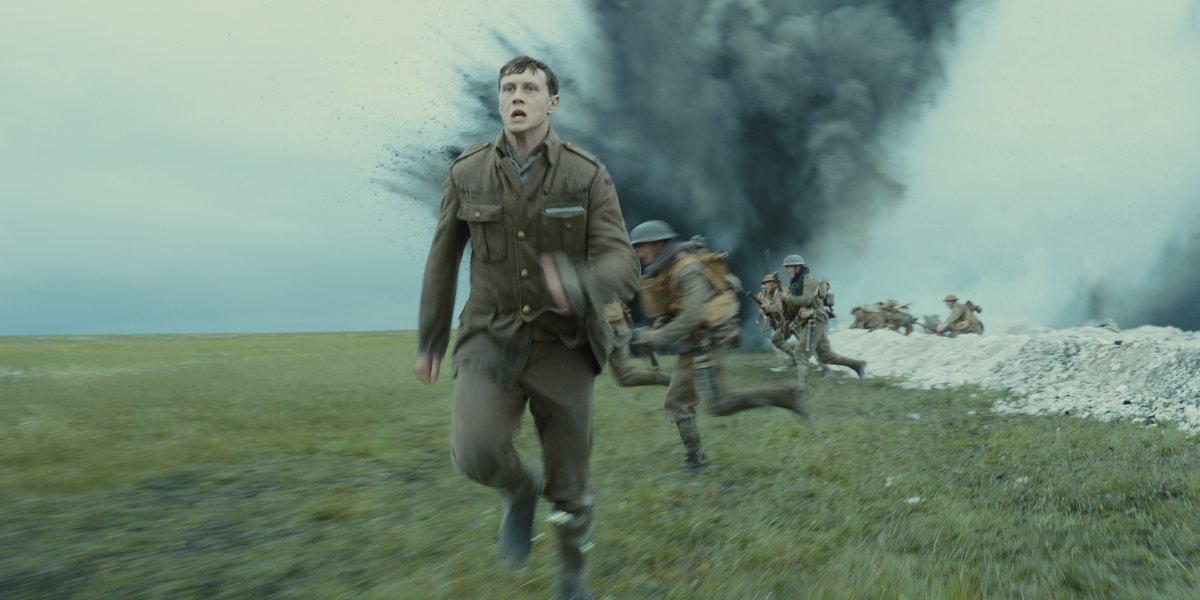
George MacKay's Fall During The Epic Trench Run Was A Total Accident
One of the most iconic shots in all of 1917 is the one in which George MacKay's Lance Corporal William Schofield is seen running to deliver his message to Colonel Mackenzie (Benedict Cumberbatch) and is knocked over by a British soldier rushing into No Man's Land. As great as this moment was, it wasn't part of the script and happened by accident. Screenwriter Krysty Wilson-Cairns revealed this during an interview with CinemaBlend in which she compared seeing MacKay fall down to watching your team miss a field goal in the Super Bowl. The scene ended up being the Academy Award-nominated writer's favorite part of the entire movie.

That Specific Scene Was The Toughest MacKay Shot During Production
In a separate interview with CinemaBlend, George MacKay revealed that the the scene in which he climbs out of the trenches and sprints against the grain of thousands of soldiers running into battle was the most grueling of the entire shoot, which is saying something considering he filmed his own stunts. During that conversation, the actor said there was short window of time in order to capture the moment and so there were no breaks between takes. After doing it again and again and again, MacKay said his legs were shaking.
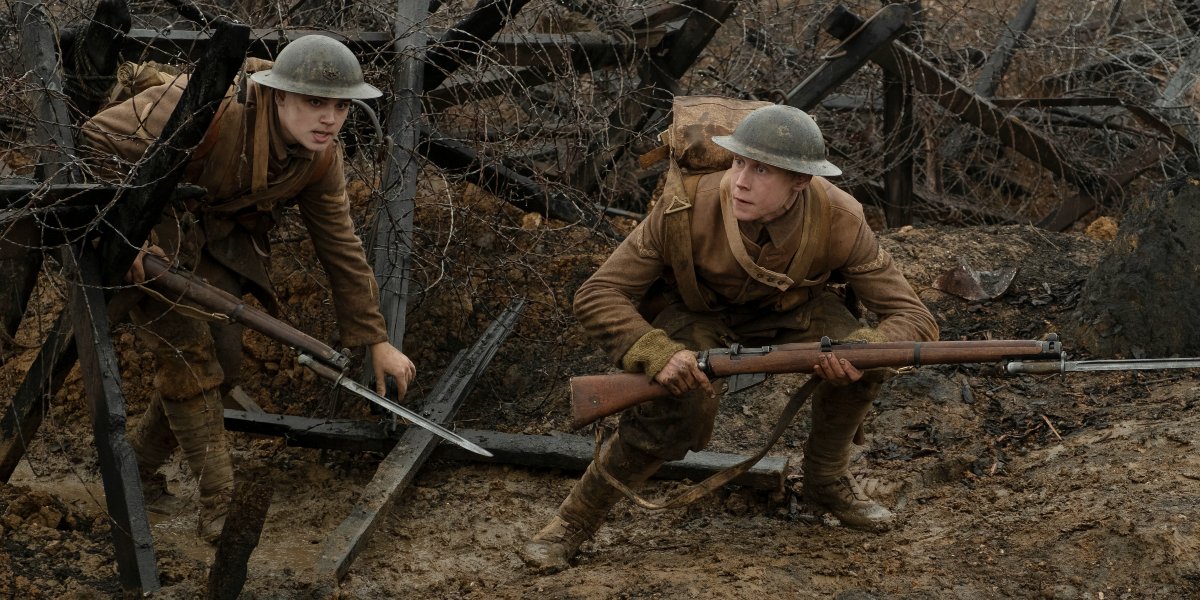
Sam Mendes Pushed The One-Shot Format To Put The Audience In The Main Characters' Shoes
Once Lance Corporal William Schofield and Lance Corporal Thomas Blake (Dean-Charles Chapman) are awoken in the opening moments of 1917, the film is mostly presented as a single one-shot that never gives the audience a chance to catch their breath. This was very much the intention of director Sam Mendes, who explained during a conversation with Variety that this was to put the audience in the characters' shoes, stating:
Your Daily Blend of Entertainment News
It felt like the best way to give you a sense of all this happening in real time. I wanted you to feel like you were there with the characters, breathing their every breath, walking in their footsteps. The best way to do that is not to cut away and give the audience a way out, as it were.
Sam Mendes decision paid off, making 1917 not only one of the best war movies in recent memory, but also one of the greatest dramas of the 21st Century, one that won't be forgotten for some time.

The Director Broke The Format At One Point For A Very Specific Reason
There is only one point in 1917 where the continuous shot is broken after Lance Corporal William Schofield is knocked unconscious after taking out the sniper about two-thirds of the way through the narrative. It's daytime when Schofield is running for his life and night when he awakes, and director Sam Mendes explained during an appearance on CinemaBlend's ReelBlend podcast that this break was used to better set up the major shift that follows, stating:
Well, it was to do with time actually. It was to do with the fact that I wanted the movie to go from afternoon to dusk, and then from night into dawn. I wanted it to be in two movements. I wanted to take the movie tonally somewhere very unexpected. And I thought it was impossible if I stayed in the same naturalistic world that the first two thirds of the movie occupies. I wanted to take it somewhere more like a hallucination. Somewhere more surreal, almost dream-like. And horrifying too.
You may recall, when the young soldier wakes up, the city is in ruins after being constantly shelled during the preceding battle. There's the tense shootout with an enemy soldier, the run-in with the young mother and child which reveals Schofield's character, and then finally at daybreak the epic river scene as the central protagonist returns to the battlefield.

When Digging The Trenches, The Production Team Was Required To Get A License To Exhume Bodies
When preparing for 1917, location manager Emma Pill was tasked with overseeing the digging of an extensive system of trenches that would be used throughout the movie. And with shooting in close proximity of Stonehenge, Pill was concerned that in digging into the ground, they would uncover bodies that could have been as old as 3,000 years, which led to the production going through the process of securing a license to exhume them if they ever came across an ancient grave. During a conversation with Vulture, Pill revealed that luckily no bodies were ever dug up, but they wanted to have all contingencies in place just in case.
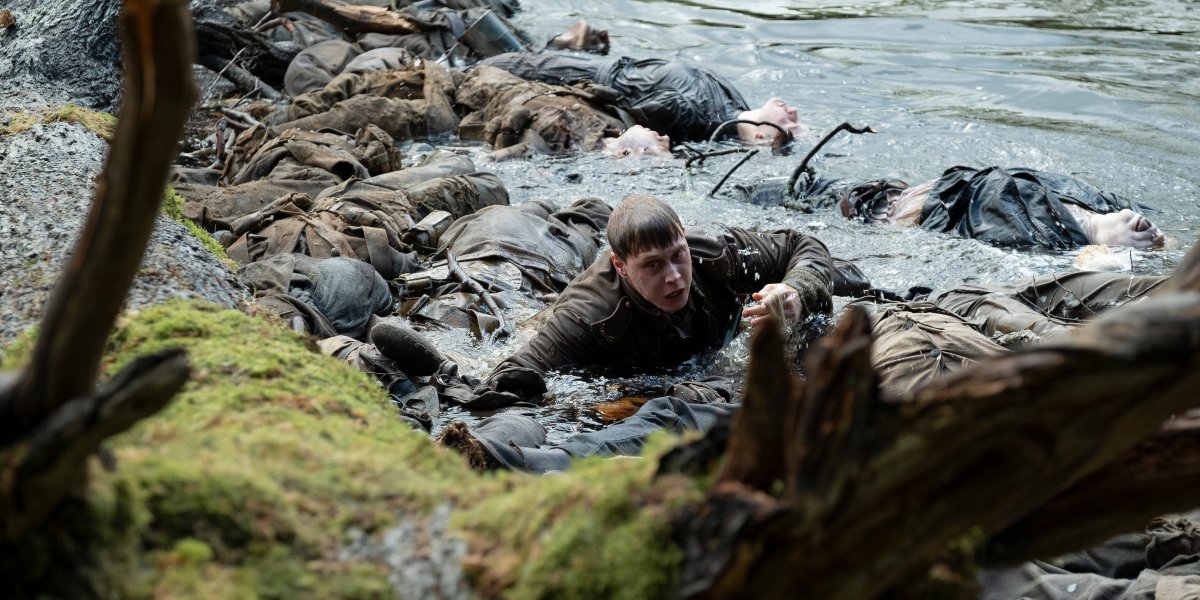
The 1917 Script Contained Extremely Detailed And Gross Descriptions Of Dead Bodies
There is a scene early in 1917 where Lance Corporal William Schofield cuts his hand open on some barbed wire and then not long after puts his wounded hand into the partially decomposed corpse of fallen German soldier. During a conversation with CinemaBlend around the time of the film's home release, screenwriter Krysty Wilson-Cairns revealed that the description of that scene, and the body, in one of the early drafts of the film is something that sticks with her to this day, stating:
That was in the script. … I believe the line that was in the script that we took out was ‘Will falls onto the body, it has the consistency of Camembert.’ … Haven’t eaten Camembert since.
If the scene wasn't bad enough already, the description in the original draft really puts the icing on the cake.
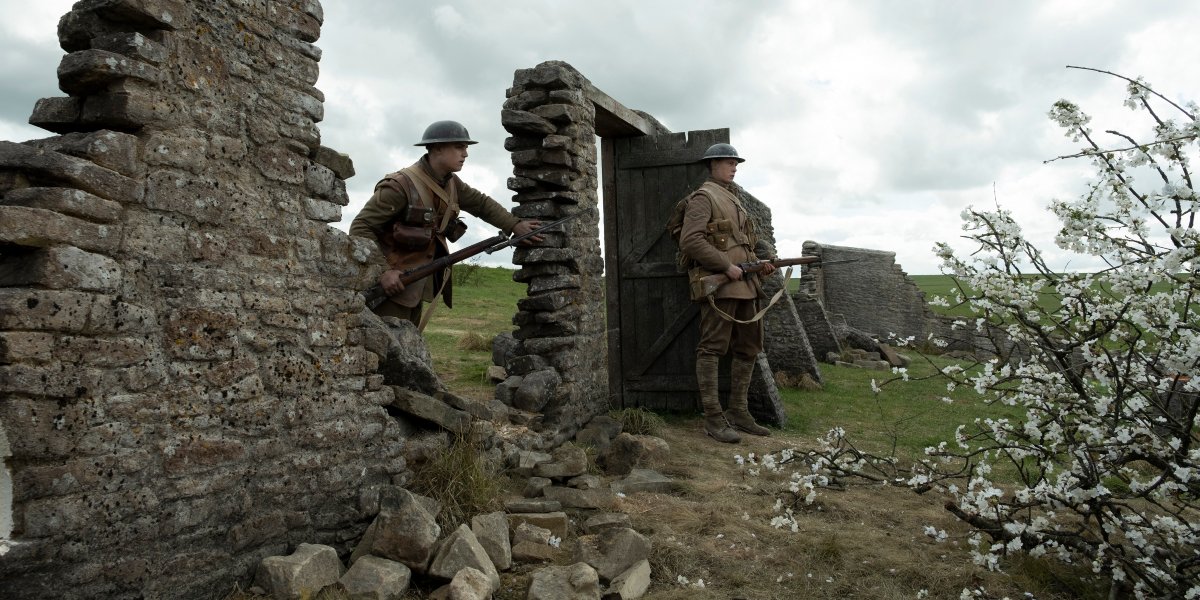
Relatively Unknown Actors Were Cast So The Audience Would Form A Unique Bond With The Leads
Some of the most well-known British stars — Colin Firth, Benedict Cumberbatch, Mark Strong — show up at different points in 1917, but the real focus of the movie is on George MacKay's Lance Corporal William Schofield and Dean-Charles Chapman's Lance Corporal Thomas Blake, two relatively unknown actors. During a conversation with CinemaBlend's ReelBlend podcast, director Sam Mendes revealed that this was done so the audience would form a unique bond with two leads while also keeping them on their toes as two young soldiers embark on their suicide mission. With these fresh faces, the audience never knows what's going to happen along the way, which works out tremendously here.
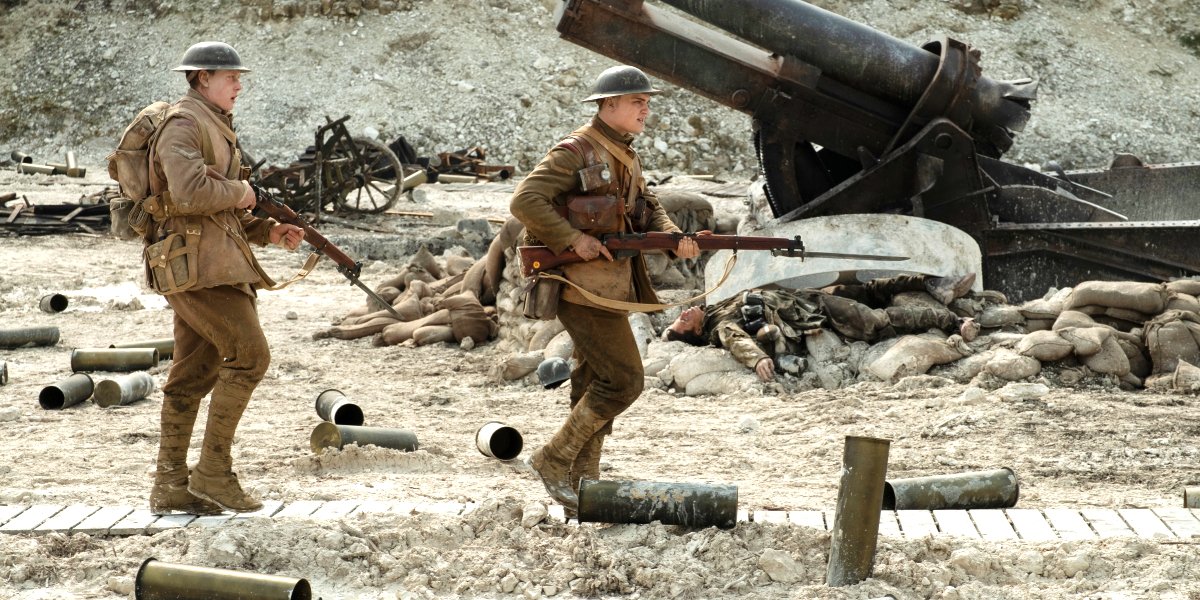
Roger Deakins Filmed 1917 On A Camera That Was The First Of Its Kind
Roger Deakins, who took home his second Academy Award for Cinematography with 1917 in early 2020, had to go through quite a lot to pull off the film's eye-catching shots and the feel of it all being a single long-take. When speaking about his award-winning work on the film with Business Insider, Deakins revealed Arri, one of the leading camera manufacturers, created the ALEXA Mini LF and sent him a prototype to see how it would do when he was doing test shots. And despite the small size compared to cameras Deakins has used in the past, he told the publication that the ALEXA Mini LF was able to give him the versatility and quality required.

The Mexico City Opening Sequence In Spectre Helped Sam Mendes When Making 1917
Prior to 1917, Sam Mendes' most recent effort was his second James Bond film Spectre, which started off with one of the most impressive one-shots in recent memory. During an interview with Looper shortly after the World War I epic received a wide release, Michael Lerman, who worked with the acclaimed director on both films, revealed that the Mexico City sequence at the start of the 2015 spy flick helped Mendes plan out his shooting method for 1917. That opening scene and 1917 both feature long shots of the action shot either in the face or over the shoulder of the main characters, creating a more intimate and intense experience.
If you found all of these 1917 behind-the-scenes facts interesting and want to check out the movie again, it debuts tonight on Showtime and will be streaming on the premium cable outlet's app and website as well.

Philip grew up in Louisiana (not New Orleans) before moving to St. Louis after graduating from Louisiana State University-Shreveport. When he's not writing about movies or television, Philip can be found being chased by his three kids, telling his dogs to stop barking at the mailman, or chatting about professional wrestling to his wife. Writing gigs with school newspapers, multiple daily newspapers, and other varied job experiences led him to this point where he actually gets to write about movies, shows, wrestling, and documentaries (which is a huge win in his eyes). If the stars properly align, he will talk about For Love Of The Game being the best baseball movie of all time.
